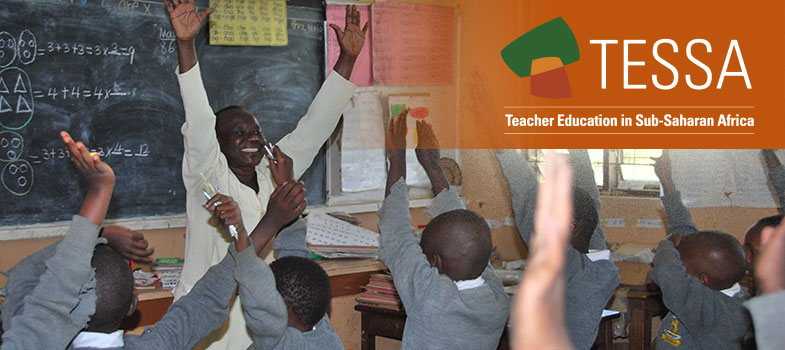3. Assessing understanding of length
It is important that pupils have a real-life ‘feel’ of what different lengths mean. To assess whether they have this feel you can use a question to solve on paper that requires them to use their understanding or give them a final investigation about a real object such as the task in the key activity.
When the task is complete, encourage your pupils to find out more about the indigenous trees of your country and have a go at measuring a large tree near your school if there is one. Working in this practical way will build their confidence in dealing with length.
Case Study 3: Assessing understanding of length
Mrs Otu from Mamfe D/C Primary wanted to find out if her pupils had a real idea about different lengths so she designed a paper activity that they had to do individually to assess their understanding. She copied the activity onto the board (See Resource 3: Questions on length). She asked her pupils to work on their own and think carefully about the answers before they filled in the gaps. She collected their books and looked at their answers.
She realised that many of her pupils had not got a real feel for length yet and so she decided to do more practical activities. She asked them to measure the school grounds but they had to estimate the length of each side first and record this. Each group took it in turns to do the measuring as she only had one long tape. She had made a large table of the key measurements and each group put in their measurements as they finished. She did not display this until all groups had finished so they would not be influenced by others results. (She planned to use this data later for a geography lesson to produce a scale map of the school site).
When all had completed the measuring she discussed the variations in their measurements with them and then asked them why this was so. They were able to suggest some good reasons such as starting at different points and not holding the tape straight.
Key Activity: How big is the big tree?
Read Resource 4: Big tree in Budongo Forest before you start and plan for the lesson, but think how you might adapt this to your pupils’ needs and find a very long tape measure. If possible take your pupils outside to where there is a lot of space, otherwise use a large hall to try out the activities. You will also need about 40 pupils of average 1m height and so you may decide to combine with another class. Work with the whole class together and asking guiding questions, help them solve the problem. Read the following extract about the ‘Big Tree’ to the class.
In Ghana in the Esen Epan Forest Reserve there is a very old giant tree, simply known as the “Big Tree”. It is about 66.5 m high and has a circumference of 12m and believed to be the biggest in West Africa.
Show them the picture as you start your lesson (seeResource 4).
When you have finished outside bring the class inside and ask them to answer the questions in Resource 4 to assess their understanding.
Next lesson, ask them to make a display of the tree and all their measuring activities in the classroom and invite other classes to come and see their work.
2. Letting pupils plan their investigations



